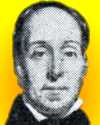
On 22 Jan 1792, an inventive Scotsman was born, named James Beaumont Neilson. Although the name of Henry Bessemer is well-known in steel-making, the name of Neilson is generally not known. Yet he made an important change to iron smelting - the hot-blast.
First it was a struggle to introduce this idea for making the iron furnaces more efficient, because he had to convince the industry to give up the cold air blast they had been using. He patented the idea, and sold the process with the promise that it made furnaces more efficient, with cost savings on lower coal consumption.
Then, it became a struggle to enforce his patents. The very people who were benefitting from using his idea went to court to avoid paying royalties. Neilson won, but the stress was exhausting, and his health suffered. Reading this biography article on Neilson will tell you much more about this interesting person. His invention revolutionized the iron smelting industry, and your attention will be rewarded to know a little more about his contribution to the Industrial Revolution
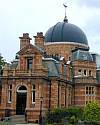
On 22 Jun 1675, the Royal Greenwich Observatory was created by Royal Warrant in England by Charles II. The building was designed by Sir Christopher Wren (who was also a Professor of Astronomy) and construction began on 10 Aug 1675. It was finished the following year. John Flamsteed was appointed as the first Astronomer Royal. Its primary uses were practical—using astronomy for navigation and timekeeping, by determination of star positions.
In 1767 the observatory began publishing The Nautical Almanac, which established the longitude of Greenwich as a baseline for time calculations. The almanac's popularity among navigators led in part to the adoption (1884) of the Greenwich meridian as the Earth's prime meridian (0° longitude) and the international time zones.
Today's book pick is: , by . This observatory is the most famous in the world, and a visitor to London has easy public transport to get there. This book gives you a background that can encourage you to make that trip when you are able.
It is available from Amazon, typically about (As of earlier time of writing - subject to change.)
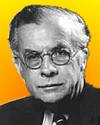 | Operationally, God is beginning to resemble not a ruler, but the last fading smile of a cosmic Cheshire Cat. |
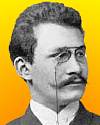 | Integers are the fountainhead of all mathematics. |
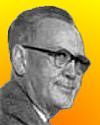 | What I really want is a creative person. You can always hire a Ph.D. to take care of the details. |
| Before you look at today's web page, see if you can answer some of these questions about the events that happened on this day. Some of the names are very familiar. Others will likely stump you. Tickle your curiosity with these questions, then check your answers on today's web page. | |
| Births | |
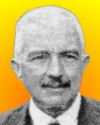 | Filippo Silvestri, born 22 Jun 1873, was an Italian entomologist, best remembered for his pioneering work in polyembryony. During the late 1930s Silvestri discovered that this type of reproduction occurs in the insect species Litomatix truncatellus. What is polyembryony? |
 | On 22 Jun 1864, a German mathematician was born. By 1907, he realised that the work of Lorentz and Einstein could be best understood in a non-euclidean space. He considered space and time, which were formerly thought to be independent, to be coupled together in a four-dimensional “space-time continuum.” This four-dimensional space is now known by his name. Can you name this man? |
| Deaths | |
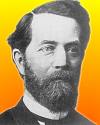 | A German mathematician (1849-1925) studied of the properties of a space that are invariant under a given group of transformations, known as the Erlanger Programm, and profoundly influenced mathematical development. He created a certain “bottle,” a one-sided closed surface, which cannot be constructed in Euclidean space. It is best pictured as a cylinder looped back through itself to join with its other end. The “bottle” is known by his name. Can you name this man? |
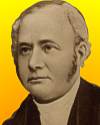 | Thomas Edmondson (1792-1851) was an English inventor whose ticket printing and numbering machine pioneered a system of fare collection in the development of the railways. He evolved a process for preparing receipts in advance, serial numbering all the tickets (for accountability of monies collected), and inventing a basic stamping system on wooden blocks. Edmondson’s early wooden dating presses were developed into iron ones and mass produced. By 1843, twenty-seven English companies, and the Paris and Rouen railway were using the system, which had now become the standard one to adopt. What circumstances prompted his invention? |
| Events | |
 | In 1633, a scientist was forced by the Inquisition to “abjure, curse, and detest” his Copernican heliocentric views. “I, … do swear that I have always believed, do now believe and, with God’s aid shall believe hereafter, all that which is taught and preached by the … church. I must wholly forsake the false opinion that the sun is the center of the world and moves not, and that the earth is not the center of the world and moves." He was then condemned to the “formal prison of the Holy Office.” Can you name this scientist? |
 | On 22 Jun of a certain year, evidence of the first moon of Pluto was discovered by astronomer James W. Christy. The moon was named Charon, after the boatman in Greek mythology who took the souls of the dead across the River Styx to Pluto’s underworld. In what decade was the first moon of Pluto discovered? |
Fast answers for the previous newsletter for June 21: helium • Poisson • Anders Ångström • boron • Cyrus Hall McCormick • the decade including the year 1948, Yehudi Menuhin • 36 cars each carried 60 passengers = 2160.
 If you enjoy this newsletter, the website, or wish to offer encouragement or ideas, please send feedback by using your mail reader Reply button.
If you enjoy this newsletter, the website, or wish to offer encouragement or ideas, please send feedback by using your mail reader Reply button. Your click on a Facebook, StumbleUpon, or other social button on the site webpages is also a welcome sign of appreciation. Thank you for using them.
© This newsletter is copyright 2020 by todayinsci.com. Please respect the Webmaster's wishes and do not put copies online of the Newsletter — or any Today in Science History webpage. (If you already have done so, please remove them. Thank you.) Offline use in education is encouraged such as a printout on a bulletin board, or projected for classroom viewing. Online, descriptive links to our pages are welcomed, as these will provide a reader with the most recent revisions, additions and/or corrections of a webpage. For any other copyright questions, please contact the Webmaster by using your mail reader Reply button.
--
If you do not want to receive any more newsletters, Unsubscribe
To update your preferences and to unsubscribe visit this link
Executive Real Estate Business Class
-
"It was like a man with wings. It wasn't like anything you'd see on TV or in a monster movie." ...
About the publisher
Search This Blog
Blog Archive
-
▼
2020
(1542)
-
▼
June
(193)
- TRAVEL: Epic America—Our photographers' picks
- On This Day for June 30 - Night of the Long Knives...
- Newsletter for Tuesday 30 June.
- We told you: Mass-Tracking COVI-PASS Immunity Pass...
- June 30: Theory of Evolution, the Night of Long Kn...
- HISTORY: And the symbols come tumbling down
- Explore the Ocean with Nat Geo Kids Magazine
- New This Week on History News Network
- On This Day for June 29 - London's Globe Theatre d...
- Newsletter for Monday 29 June.
- COVID Cartoon Night (not funny) while we weep for ...
- June 29: Shakespeare's Globe Theatre Burns Down an...
- FAMILY: Getting your kid to help others
- Henry VIII's surprising burial place | The world's...
- On This Day for June 28 - Assassination of Archduk...
- Say the wrong thing: lose visitation with your kid...
- Newsletter for Sunday 28 June.
- June 28: Franz Ferdinand Assassinated, the Treaty ...
- The Compass: Kenya
- How the Invention of A/C Changed US Politics
- On This Day for June 27 - Yen made official moneta...
- Newsletter for Saturday 27 June.
- June 27: 1st Women's Magazine, Nuclear Power Stati...
- CORONAVIRUS SPECIAL EDITION: The virus hasn't won ...
- PHOTOGRAPHY: A legendary photographer's enduring r...
- Partner: How to keep your kids learning vocab this...
- Archaeologists Say They've Just Solved The 400-Yea...
- The Roundup Top Ten From History News Network
- On This Day for June 26 - Opening of CN Tower, Bab...
- Newsletter for Friday 26 June.
- Contact Tracer warns of forced vaccinations plus R...
- June 26: Reconnaissance balloons, Kennedy's Clario...
- YOUR WEEKLY ESCAPE: A dangerous quest for hallucin...
- That Was No Bunny: Watch New Episode of Alone Tonight
- ANIMALS: Leave that elephant alone
- On This Day for June 25 - Korean War begun, Antoni...
- Newsletter for Thursday 25 June.
- June 25: 1st Female PhD, Custer's Last Stand, the ...
- SCIENCE: The heat wave in the Arctic
- Demystified: What Does "SPF" Mean?
- On This Day for June 24 - Russia invaded by Napole...
- Breaking News from History News Network
- Newsletter for Wednesday 24 June.
- June 24: Fatal Medieval Dance Manias, the Gadsden ...
- TRAVEL: Fear of flying and hotel rooms fuels RV boom
- Be at the Front Lines of History's Most Epic Battl...
- On This Day for June 23 - Battle of Bannockburn, C...
- Lowest US coronavirus deaths reported since March ...
- Newsletter for Tuesday 23 June.
- June 23: World's Oldest Parliament, the Contracept...
- Life Under The Shah: What Iran Looked Like Before ...
- HISTORY: A swift goodbye to some racist imagery (a...
- A whole year of Britannica Premium for $49.99?
- New This Week on History News Network
- On This Day for June 22 - Mutiny against Henry Hud...
- Newsletter for Monday 22 June.
- Clintons and Gates Connected at the Hip plus Cardi...
- June 22: Galileo Galilei Recants, Last Shot of the...
- FAMILY: How to keep kids safe as places reopen
- On This Day for June 21 - Japanese defenses destro...
- Newsletter for Sunday 21 June.
- June 21: 1st Governor General of India, Fermat's L...
- The Compass: Ecuador
- On This Day for June 20 - Casket Letters found, Ho...
- Newsletter for Saturday 20 June.
- CORONAVIRUS SPECIAL EDITION: Could public bathroom...
- Mandatory Vaccines coming: Bill Gates Accuses Tho...
- June 20: Attila the Hun, the University of Oxford ...
- PHOTOGRAPHY: Fatherhood 2020 — ‘Fear and courage a...
- Why is America haunted by its past?
- The Woman Who Claimed Emmett Till Wolf-Whistled At...
- This Week's Roundup Top Ten from History News Network
- Exclusive HistoryExtra podcasts | Listen now
- On This Day for June 19 - Rosenbergs executed for ...
- Newsletter for Friday 19 June.
- World Economic Forum starts The Great Reset initia...
- YOUR WEEKLY ESCAPE: How the ultimate shark photo w...
- June 19: London's Metropolitan Police and the 1st ...
- Predator Encounters. Watch New Episode of Alone To...
- ANIMALS: Finding the snow leopards
- Count on a Source You Can Trust
- On This Day for June 18 - War of 1812 begun, Sir P...
- Newsletter for Thursday 18 June.
- Lockdowns, tracing, testing, vaccinating, and Libe...
- June 18: US-British War of 1812, the Battle of Wat...
- SCIENCE: They grew fearsome. They began soft, and ...
- Demystified: How Are Sports Chosen for the Olympics?
- Breaking News from History News Network
- On This Day for June 17 - Arrest of O.J. Simpson, ...
- Newsletter for Wednesday 17 June.
- June 17: Mumtaz Mahal, the French Revolution and G...
- TRAVEL: They hurtled the world's highest point
- Explore together with Nat Geo Kids magazine
- On This Day for June 16 - First woman in space, Jo...
- Newsletter for Tuesday 16 June.
- June 16: Salvation Army Forms, Bloomsday and FDR's...
- HISTORY: Why we can’t shake COVID-19
- New This Week on History News Network
- On This Day for June 15 - Magna Carta sealed by Ki...
- Yes, they really are forcing changes to your world...
-
▼
June
(193)
-
Blogroll
-
About
HistoryFact










0 comments:
Post a Comment